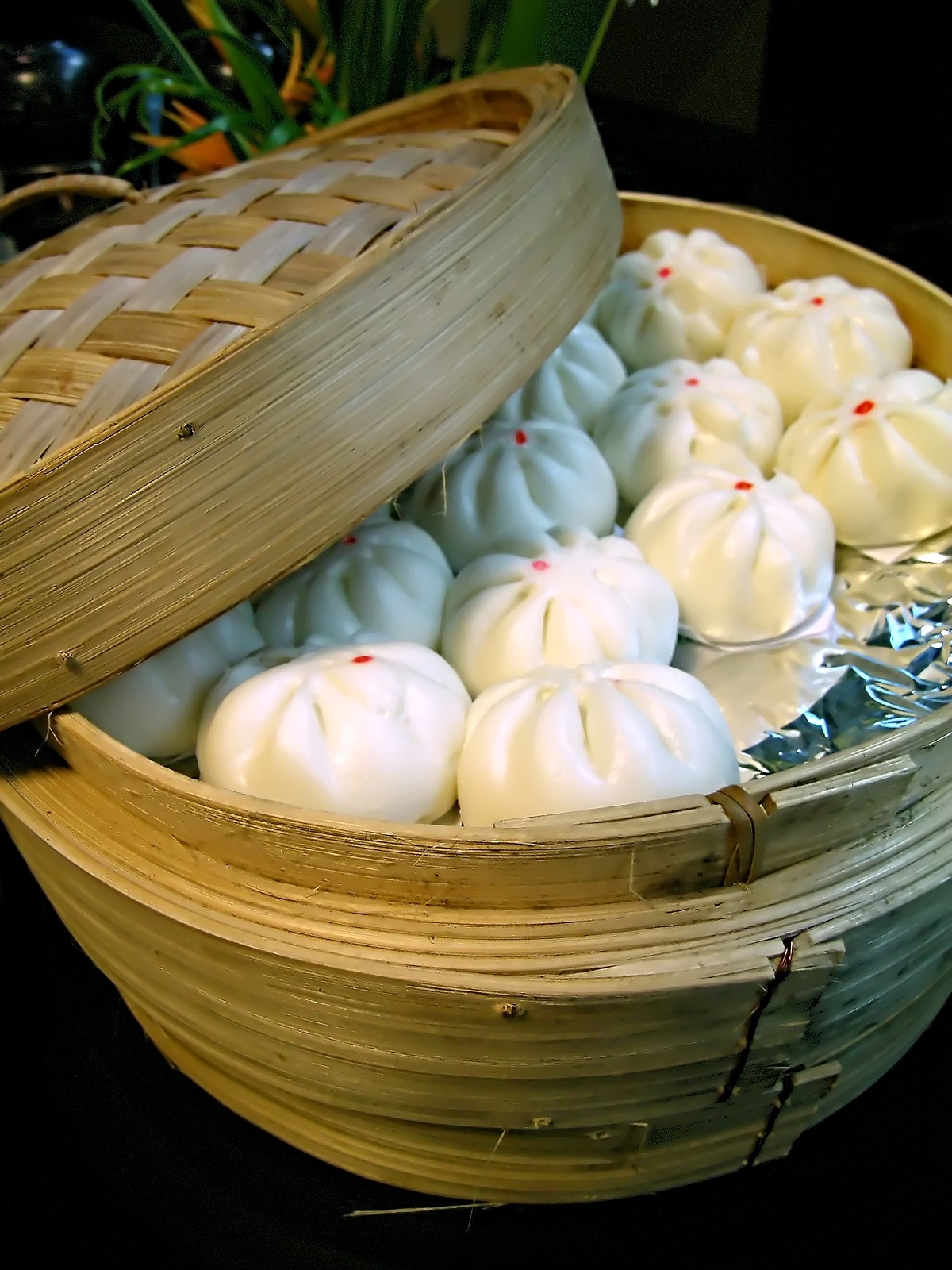Part of the magic of Christmas – in addition to snow, twinkling lights, decorated trees and amazing music – is food. Christmas food traditions can make memories that will last a lifetime, with treasured recipes handed down through families, and shared with good friends.
At Christmastime, my mother and her friend Marge always made steamed barbecue pork-filled buns, a Chinese tradition that goes back centuries. The buns – called bao, pronounced bow as in bow-wow – are a fixture on restaurant dim sum menus and a favourite for many. Making the buns requires several steps, which is why they’re great to make with other people, to speed up the process and make it more fun. It involves making the dough and filling, forming the buns, spooning in the filling and then steaming or baking them. Getting together to make bao can be a lot of fun; you get to have a visit, and you have something delicious to eat, and share with your family, after you’re done.
This longtime family recipe is based on the traditional way of making bao, with a Canadian take, with a lot more vegetables included in the filling; and the recipe for the dough carefully adjusted by my mother for Calgary’s relatively high altitude.
The filling uses thinly sliced roasted pork tenderloin marinated overnight in Chinese barbecue sauce and a variety of seasonings from Thailand: a fish sauce made from anchovies – “it doesn’t taste fishy,” Marge says – and a Thai seasoning with paprika, beet powder, sugar, salt, star anise and cinnamon – that turns the pork bright red. The filling is loaded up with lots of vegetables, including finely chopped celery, onions and kohlrabi, for extra crunch and vegetable goodness.
The filling is then spooned into the dough and shaped into a couple of dozen round bao and popped into the oven to bake, or a steamer to steam.
“I always put a little bit of oil on (the steamer bottom, where the buns sit) so it doesn’t stick, and usually it doesn’t,” Marge says.
It doesn’t take long before the bao are done because the filling is already cooked.
“In the oven, you have to watch, so it doesn’t over-brown. When they’re baked, they are very nice – they are a little bit crunchy.”
At Christmas, “we always made it like a little celebration when you were coming home,” Marge says. “You were away, and Annalee (Marge’s daughter) was away, and we made it … because you came home for the holidays.”
Bao were a part of my family’s Christmas celebrations that helped make the festive season special, along with other recipes. There was an alternate, traditional Chinese dish that my mother often made as an alternative to traditional stuffing or traditional stuffing. It was savoury and delicious, with a base of glutinous rice, oyster sauce, minced Chinese sausage, Chinese mushrooms, dried shrimp, green onions and other finely chopped ingredients.
Christmas desserts were equally treasured. Family favourites included melting shortbread, decorated with bits of candied green and red cherries; a rounded shortbread cookie made special with ground walnuts as part of the cookie batter, then warm out of the oven, rolled in sugar; and delectable fruitcake, a traditional English recipe, shared by a relative who was a fantastic baker. My aunt made that recipe – a lot of work – for us, every Christmas.
Because of COVID-19, this Christmas will be the first in a long time that Marge and I won’t be getting together to make bao. But I can still make it on my own – and recreate that same magic and warmth of the holiday season.
Bao Dough & Filling
Traditional recipe adapted by B.J. Louie
2 Tbsp dry yeast
1 tsp sugar
½ cup of warm water
2 eggs, beaten
½ cup oil
1 tsp salt
4 tsp baking powder
Approximately 6 -7 cups unbleached white flour
2 cups warmed milk
Put yeast in sugar water mixture for 10 minutes. In a large bowl combine oil and salt. Add beaten eggs, warmed milk and yeast mixture. Beat in baking powder mixed with 2 cups flour. Gradually add another 4 – 5 cups flour and knead until smooth. Let dough rise for half an hour.
Flatten dough and then form into baos – a round bun stuffed with roasted meat and vegetables.
Filling:
Typically, a mixture of roasted/barbecued meat (pork is traditional), other options could include beef, poultry or lamb.
Roast or barbecue the meat then cut into small pieces. Chop vegetables into small pieces: use plenty of (pan)-fried celery and fried onions. For extra crunch, add chopped (pan)-fried kohlrabi. Mix all together. Seasoning options for the filling include Chinese barbecue sauce; or Hoisin sauce, for those who like a sweet taste; or your favourite seasoning or spice. Steam buns for 20 minutes or bake at 350 F for 20 – 25 minutes.
Note: if you end up with more filling than dough, you can always freeze the filling for use later. Leftover dough, if any, can be used to make plain buns as well.





